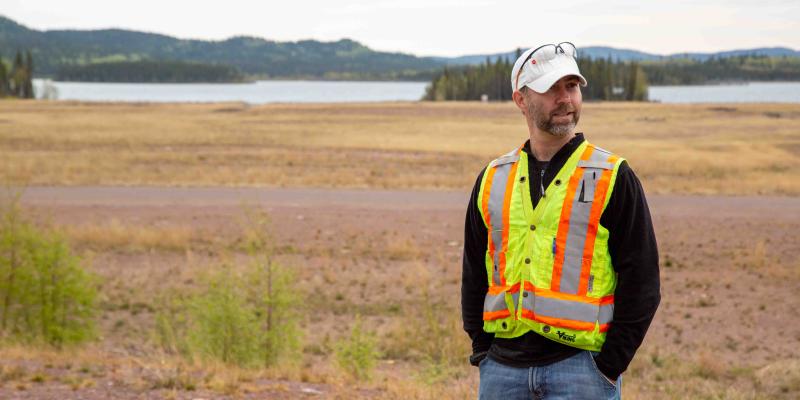During the 1950s and 1960s, uranium mines and small prospecting sites were developed and operated across northern Saskatchewan by private companies. The sites and mining operations were later abandoned with little consideration to environmental protection or aesthetics. At that time, there was insufficient environmental legislation in place to guide site decommissioning and reclamation.
More than 50 years have passed and these abandoned mine sites have deteriorated, creating conditions that pose risks to local residents and the environment.
In 2006, the governments of Canada and Saskatchewan contracted SRC to manage the cleanup of 37 abandoned uranium mine sites (Project CLEANS), near Uranium City.
Learn more about the sites undergoing remediation:
Gunnar Project Milestones
- Demolition (including headframe) completed in 2012
- Environmental Impact Statement (EIS) approved in August 2014
- Waste Nuclear Substance License obtained in January 2015
- Phase II hold point Gunnar Tailings removed in November 2015
- Phase II activities started in September 2016
- Phase II hold point for Gunnar Other Site Aspects removed in November 2016
- Phase II activities to start in 2018
Lorado Project Milestones
- Waste Nuclear Substance License obtained in May 2013
- Environmental Impact Statement (EIS) approved in February 2014
- Phase II activities started in March 2014 and completed in October 2016
- Currently transitioning into Phase III, post-remediation monitoring
Cleanup Goals
- Conduct remediation activities in a manner that meets regulatory requirements, including long-term monitoring to demonstrate successful final rehabilitation.
- Aim to return the sites to a state that supports safe, future use by local residents for traditional purposes, such as hunting and fishing.
- Continue to meet with leadership and communities of the Athabasca region during all phases of the project.

